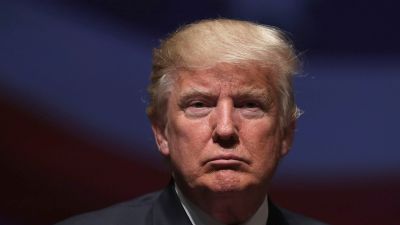
PORTLAND, OR - AUGUST 28: Protesters hold their fists in the air during a Black Lives Matter march on August 28, 2020 in Portland, Oregon. The protest, organized by the Oregon NAACP, drew many participants as similar Black Lives Matter events took place across the country. (Photo by Nathan Howard/Getty Images)
This op-ed first appeared in USA Today
Tuesday night, Aug. 25, at the gateway to the University of Wisconsin campus in Madison, a crowd gathered to hear speakers protest the atrocious shooting of Jacob Blake in Kenosha. As one of us (Soglin) joined the protest, with the African immigrant Samba Baldeh, a Democratic nominee for an assembly seat, a man at the edge of the crowd was shouting, “Break things! Break it!”
Soglin and Baldeh wondered who this could be. They and other local officials mingled with the crowd urging peaceful protest, John Lewis’s “good trouble,” and discussing with students the imperative of protesting injustice nonviolently. Later that night, as the crowd dispersed, the organizers, aware that smashing windows is not a persuasive critique of capitalism and that looting does not amount to reparations, tried their best to dissuade a handful of trashers from destroying property. They were not successful.
It’s important for protests to remain peaceful
Polls show that most Americans sympathize with Black Lives Matter even as the movement has forfeited some of its earlier support, unsurprisingly, specifically, in Wisconsin. Still, the video of a policeman shooting Jacob Blake in the back seven times that went viral showed clearly — even to Americans not already been revolted and infuriated by the murders of Trayvon Martin, Eric Garner, Michael Brown, Philander X, Ahmaud Arbery, Breonna Taylor, and most recently, George Floyd — the wretched consequences when Black lives don’t matter.
So when reckless police violence is so flagrantly visible, why would anyone call for breaking things, generating more white backlash in a swing state? Why antagonize small business owners and residents who want protection from arsonists and looters? Why play into Donald Trump’s hands by reinforcing his dystopian scenario of “carnage”? The disrupter did not explain himself.
The protest leaders’ attempt to dissuade a handful of trashers from destroying property that Tuesday night did not succeed, but their effort did not go unrewarded. During the next three nights, despite growing outrage over the shooting of Jacob Blake and then the murder of two of their fellow protesters in Kenosha, the growing assemblies were not marred by violence. They remained peaceful.
In this benighted time, reckless would-be revolutionaries — some of whom may well be agents provocateurs — are attracted by nonviolent protests and try to hijack the events. Some may be maddened by rage. Some no doubt know that by the normal code of journalism, violence, whether against persons or property, is photogenic. In the eyes of the public and flame-fanners like Donald Trump’s Republicans, violence becomes “the story”?
How peaceful protesters can help
What can be done by the overwhelming majority of peaceful protesters? In Portland, Oregon, last month, a Wall of Moms, in yellow shirts, arms linked, interposed themselves between the peaceful crowd and unidentified Federal agents — a success until racial strife broke up the group.
Here’s another model of what can be done: As a video shows, in Washington, D.C., on May 31, peaceful demonstrators saw a lone man wielding a hammer to smash up a nearby sidewalk. Police stood a few yards away and did nothing. The demonstrators restrained the man, tackled him, surrounded him and led him into the custody of the nearby cops.
This is active monitoring. It’s essential. An active monitor is committed not only to practicing nonviolence but to containing and curbing the violent interlopers as nonviolently as practicable. No doubt some pseudo-revolutionaries will despise the active monitors. So be it. With Trump spotlighting the mayhem — mayhem mushrooming on his watch, but never mind — the stakes are too high for standing idly by.
The views expressed in this post are the author’s alone, and presented here to offer a variety of perspectives to our readers.




